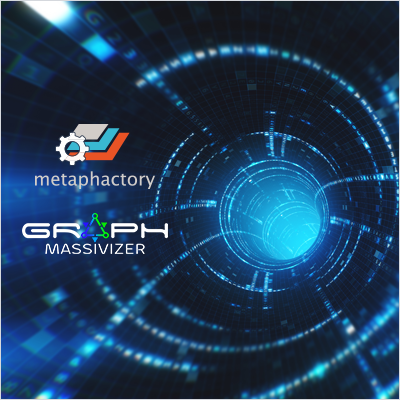The ultimate guide to semantic knowledge modeling best practices
There’s a lot of advice out there on semantic modeling – and not all of it is easy to follow. Informed by our extensive industry experience, metaphacts summarises some of the best practices to follow when semantic modeling to unlock the full potential of your data.
Enhanced vocabulary editing and governance in metaphactory
In a previous article, we explored ontology governance in metaphactory. Here, we'll explore new features that enable flexible and transparent governance and editorial workflows for your vocabularies, simplifying collaboration among multiple team members. Keep reading!
SEMANTiCS 2025 Conference Report
Couldn’t make it to SEMANTiCS 2025 in Vienna? Our Community Growth Manager, Larry Swanson, was there soaking up the talks and hallway conversations with fellow semantic-tech enthusiasts. From real-world applications like ZEISS’s Service Copilot and IKEA’s evolving enterprise-scale knowledge infrastructure to recurring themes around the interplay of knowledge graphs and LLMs, Larry came back with plenty of inspiration and a few standout takeaways. Keep reading for the full report!
Neuro-symbolic AI: The key to truly intelligent systems
Discover how neural-network technologies like large learning models and generative AI work with symbolic technologies like knowledge graphs to give enterprises the trustworthy AI they need.
Keeping humans in the loop: A human-centric Knowledge Graph Conference
We’ve attended The Knowledge Graph Conference (KGC) numerous times and yet we’re always delighted to find that each year brings a refreshing perspective to a long-standing yet quickly-evolving industry. In this article, our Community Growth Manager, Larry Swanson, shares his report of this year’s KGC, specifically noting two talks that underscored the human-centric theme that recurred throughout the conference. Keep reading for his takeaways!
Introducing the Knowledge Graph & AI Hub by metaphacts
Discover the Knowledge Graph & AI Hub, a global community for knowledge graph and AI enthusiasts, researchers and professionals—organized by metaphacts.
Building an Enterprise Information Architecture from the top-down or bottom-up
In this article written for The Knowledge Graph Conference, we explore the two typical approaches for implementing an EIA and offer recommendations for how you can ensure a smooth transformation of your data environment. Keep reading!
This post has also been published on The Knowledge Graph Conference blog.
The future of information systems: Converging hybrid AI and enterprise modeling
In this blog post, we recap a panel discussion from the HybridAIMS 2024 conference, which explores the impact the potential convergence of hybrid artificial intelligence and enterprise modeling could have on information systems.
Enterprise Information Architecture success stories from leading global organizations
From disconnected data silos to a unified, knowledge-centric organization—discover how two multinational organizations reshaped their data culture with a semantic model-driven Enterprise Information Architecture.
Efficient and high-performance operation of semantic models in Enterprise Information Architecture
In this guest post, Michael Schäfer, IT architect and Division Lead Multicloud & Modern Work at Netlution dives into how semantic knowledge models enable efficient data collection, organization, and utilization to drive business success, as well as important considerations when assessing the IT operating model for an EIA solution.
BIBFRAME dilemmas for libraries: Challenges and opportunities
In this article, Richard Wallis, a distinguished Linked Data and Semantic Web expert and thought leader, shares insights from the recent BIBFRAME Workshop in Europe where he presented a novel knowledge graph-powered solution created for a major national library. He also explores the common challenges that libraries currently face and the opportunities that technologies like linked data and knowledge graphs can offer for managing and connecting massive data volumes, as well as improving the experience for library users.
A guide to ontology governance in metaphactory
In this blog post, we’ll explore the importance of establishing policies and frameworks that govern the creation and management of ontologies within your organization. We also look at how metaphactory’s ontology management helps to facilitate proper governance.
How a semantic model can elevate your enterprise information architecture
If your organization doesn’t already have an enterprise information architecture in place—it should, and if you do have one, it should be based on a semantic model. In this article, we’ll explain what an “enterprise information architecture” is and how it can support your enterprise with decision intelligence, knowledge democratization and enterprise-wide optimization.
How to approach semantic modeling: Perspectives from a metaphacts friend
In this blog post, guest author Veronika Heimsbakk, knowledge graph lead at Capgemini, shares her approach to creating semantic knowledge models for clients. Read this guide to learn how she works together with clients to build semantic knowledge models from the ground up and discover practices you can apply to your own semantic modeling initiatives.
We used a knowledge graph to enhance our CMS. Here’s how it went.
Building massive knowledge graphs using automated ETL pipelines
 In this blog post, we’ll explore how to build a massive knowledge graph from existing information or external sources in a repeatable and scalable manner. We’ll go through the process step-by-step, and discuss how the Graph-Massivizer project supports the development of multiple large knowledge graphs and the considerations you need to take when creating your own graph. Keep reading!
In this blog post, we’ll explore how to build a massive knowledge graph from existing information or external sources in a repeatable and scalable manner. We’ll go through the process step-by-step, and discuss how the Graph-Massivizer project supports the development of multiple large knowledge graphs and the considerations you need to take when creating your own graph. Keep reading!
Building explainable and trustworthy recommendation systems: What we learned from IKEA at KGC 2023
In this blog post, we dive into how knowledge graphs play an important role in IKEA's recommendation systems, based on our experience attending two presentations by IKEA at the 2023 Knowledge Graph Conference.
The future of libraries and linked data: How the National Library Board of Singapore modernized its data management
In this blog post, we'll discuss the powerful knowledge graph-based solution that transformed NLB's library and resource management, and how you, too, can leverage these tools to support your organization's data-driven use case!
The importance of the semantic knowledge graph
This article is the first in a series of two where we discuss our perspective on what is considered a semantic knowledge graph, why it's important, and share how they can drive your enterprise goals forward.
Connecting the best of both worlds: ontologies and vocabularies in metaphactory
The terms "ontology" and "vocabulary" are often used interchangeably. However, more often than not, this leads to confusion among customers who want to semantically model their domain and results in questions about whether there is in fact a distinction between the two and whether both are needed to implement a knowledge graph.
The meta-layers that these terms describe have been captured by different standards (OWL and SKOS respectively) and we at metaphacts believe that there is value in treating both as individual but complementary assets in their own right.



















